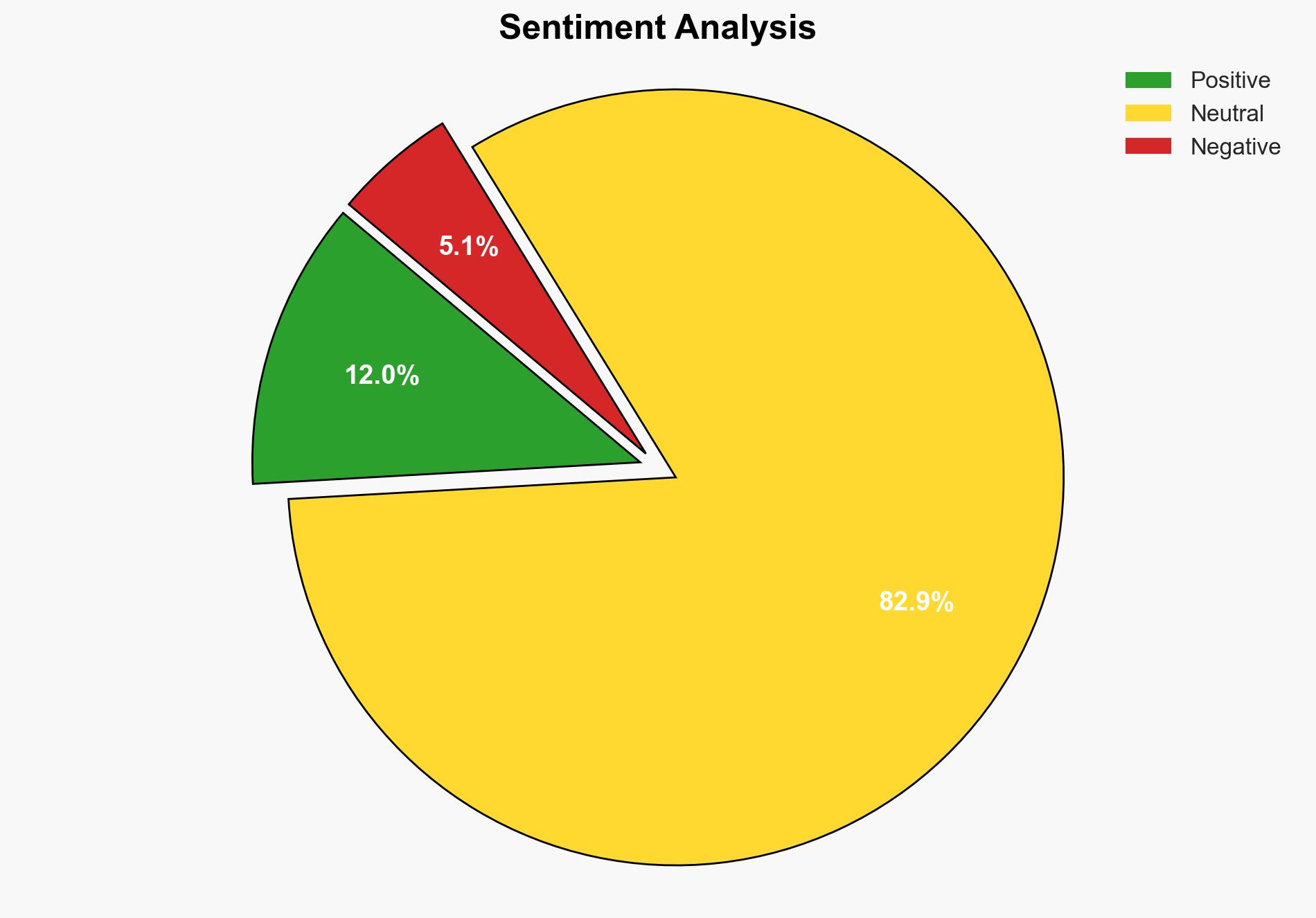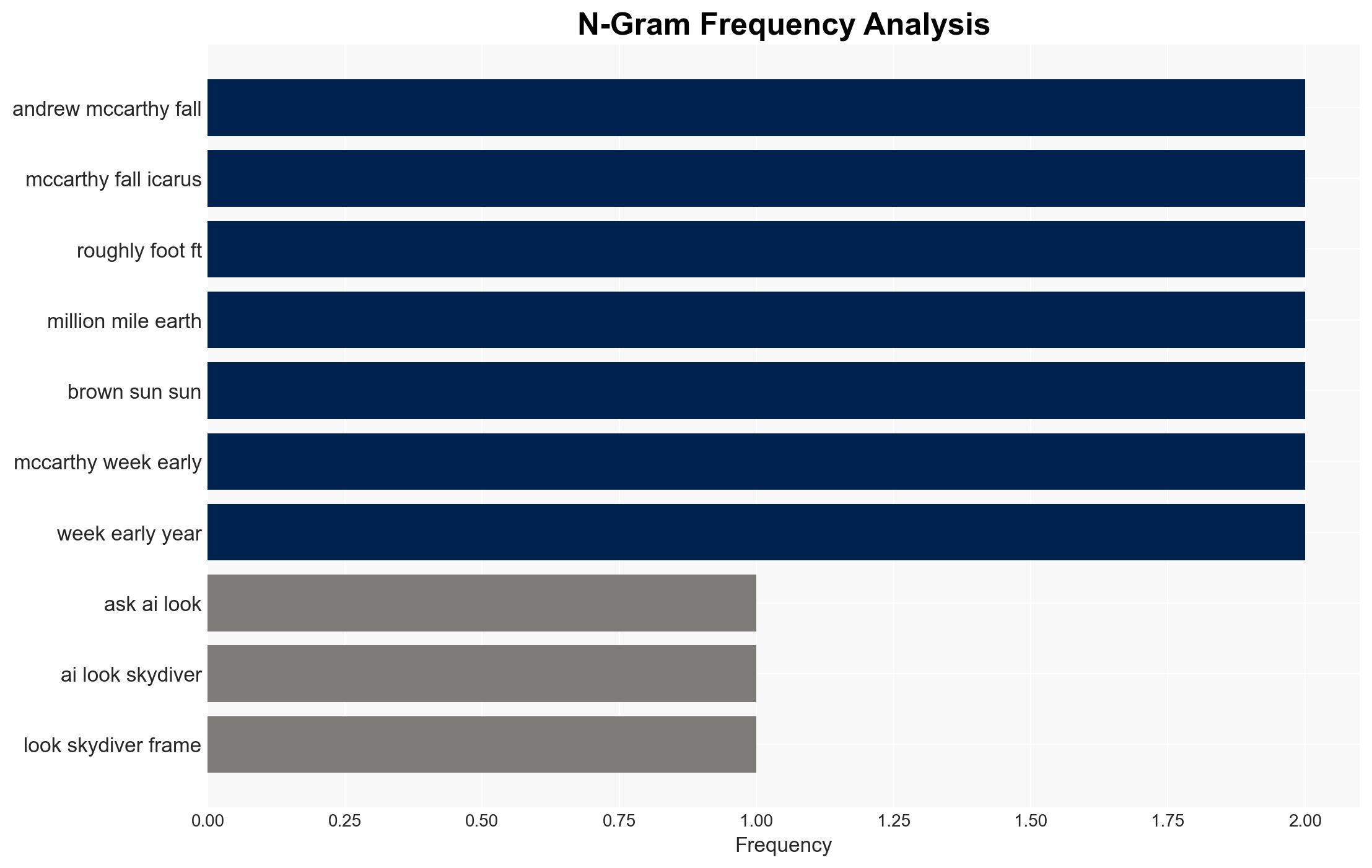How 2025’s most famous astrophotograph was shot – New Atlas
Published on: 2025-11-19
AI-powered OSINT brief from verified open sources. Automated NLP signal extraction with human verification. See our Methodology and Why WorldWideWatchers.
Intelligence Report:
1. BLUF (Bottom Line Up Front)
The most supported hypothesis is that the photograph “The Fall of Icarus” was a genuine artistic endeavor achieved through meticulous planning and execution, rather than a digitally manipulated creation. This conclusion is based on the detailed description of the planning and execution process, as well as the credibility of the individuals involved. Confidence level: Moderate. Recommended action: Monitor for any emerging evidence of digital manipulation or AI involvement to reassess the authenticity of the photograph.
2. Competing Hypotheses
Hypothesis 1: The photograph “The Fall of Icarus” was genuinely captured through meticulous planning and execution involving astrophotography techniques and skydiving coordination.
Hypothesis 2: The photograph was digitally manipulated or generated using AI, and the narrative of its capture is a constructed story to enhance its artistic value.
The first hypothesis is more likely due to the detailed account of the planning process, the technical specifics provided, and the reputations of Andrew McCarthy and Gabriel Brown in their respective fields. However, the possibility of digital manipulation cannot be entirely ruled out without further evidence.
3. Key Assumptions and Red Flags
Assumptions: The accounts of the photograph’s creation are accurate and truthful. The technical details provided align with known astrophotography practices.
Red Flags: The potential for digital manipulation in modern photography, the lack of independent verification of the photograph’s authenticity, and the possibility of bias in the narrative to enhance artistic value.
4. Implications and Strategic Risks
The primary risk is reputational damage to the individuals involved if the photograph is later proven to be digitally manipulated. This could also impact the credibility of similar artistic endeavors. Additionally, if AI-generated images are falsely presented as genuine, it could lead to broader skepticism and devaluation of authentic artistic works.
5. Recommendations and Outlook
- Actionable steps: Encourage transparency in the artistic process and promote independent verification of high-profile artistic works to maintain credibility.
- Best scenario: The photograph is verified as genuine, enhancing the reputations of those involved and inspiring further creative endeavors.
- Worst scenario: The photograph is revealed to be digitally manipulated, leading to reputational damage and increased skepticism of artistic works.
- Most-likely scenario: The photograph remains accepted as genuine, but ongoing scrutiny and technological advancements continue to challenge the authenticity of artistic works.
6. Key Individuals and Entities
Andrew McCarthy, Gabriel Brown
7. Thematic Tags
Cybersecurity, Digital Manipulation, Artistic Authenticity
Structured Analytic Techniques Applied
- Adversarial Threat Simulation: Model and simulate actions of cyber adversaries to anticipate vulnerabilities and improve resilience.
- Indicators Development: Detect and monitor behavioral or technical anomalies across systems for early threat detection.
- Bayesian Scenario Modeling: Quantify uncertainty and predict cyberattack pathways using probabilistic inference.
Explore more:
Cybersecurity Briefs ·
Daily Summary ·
Support us





